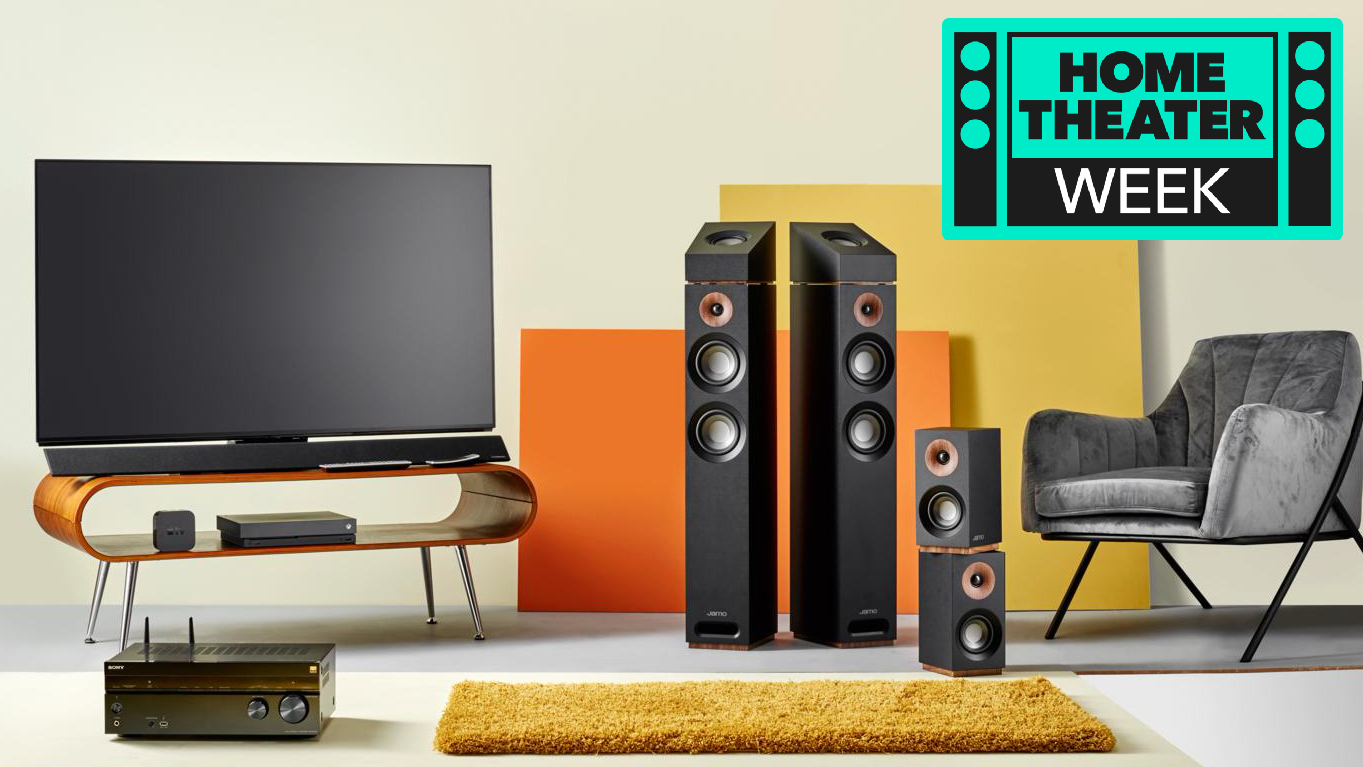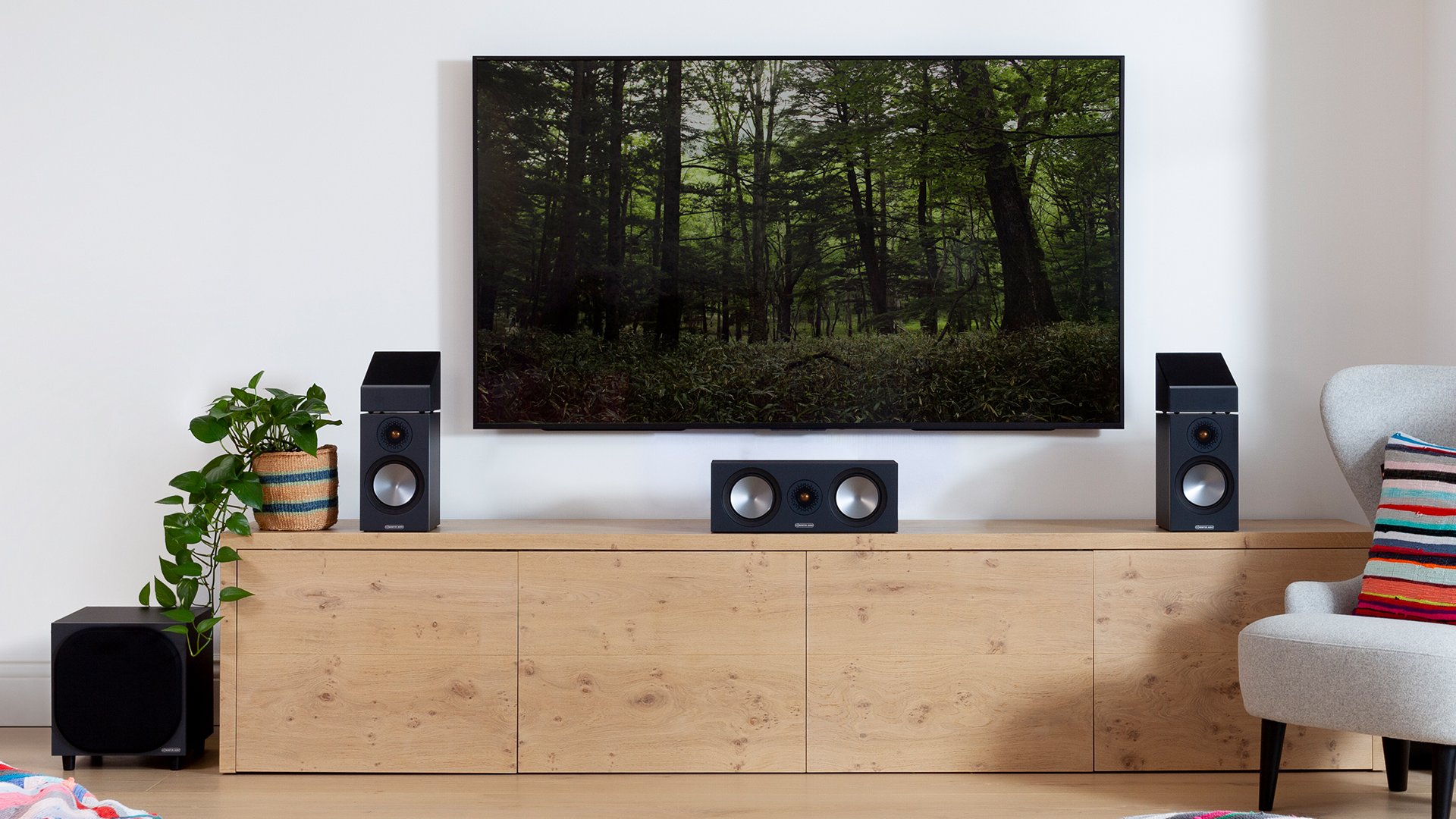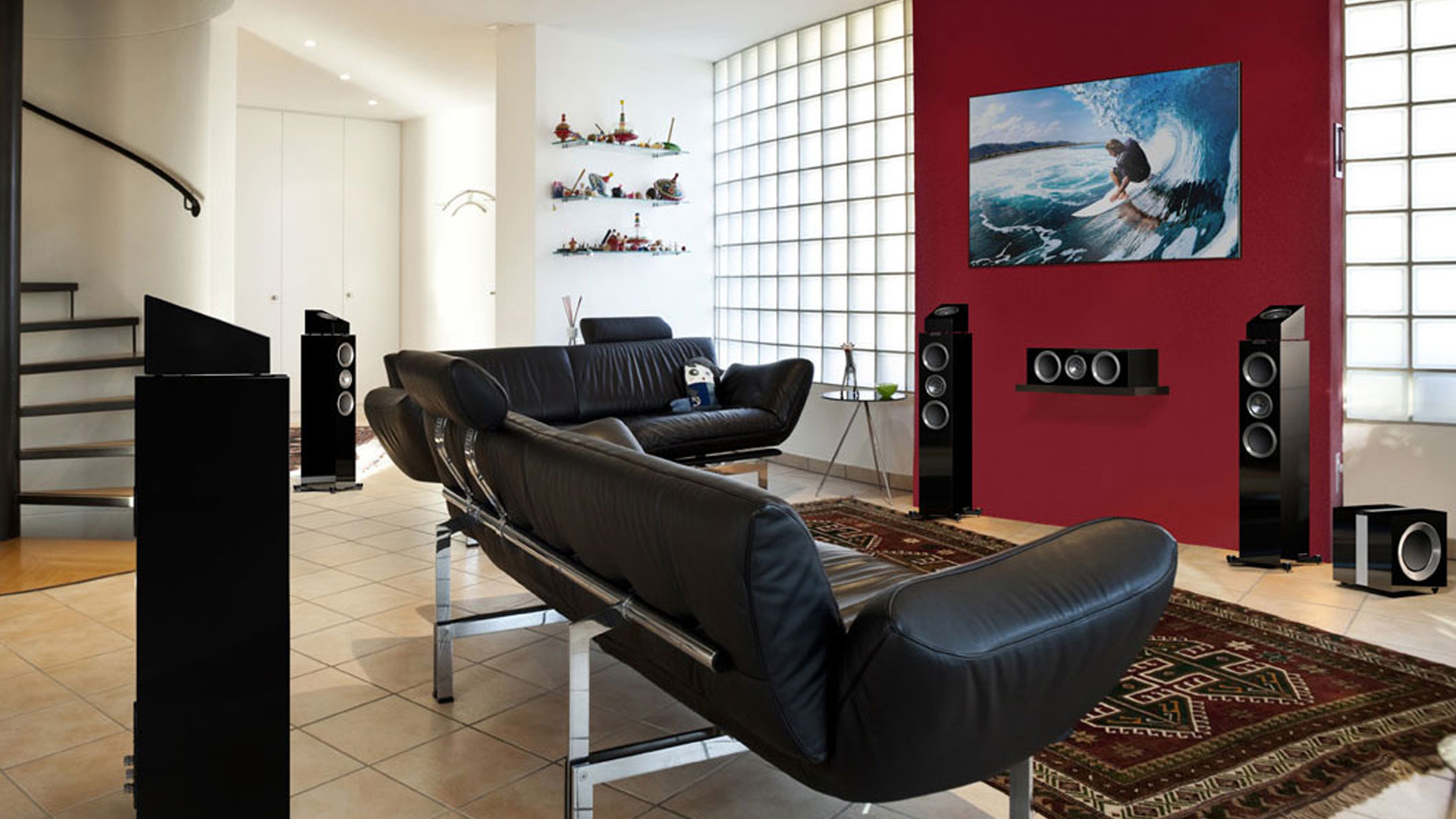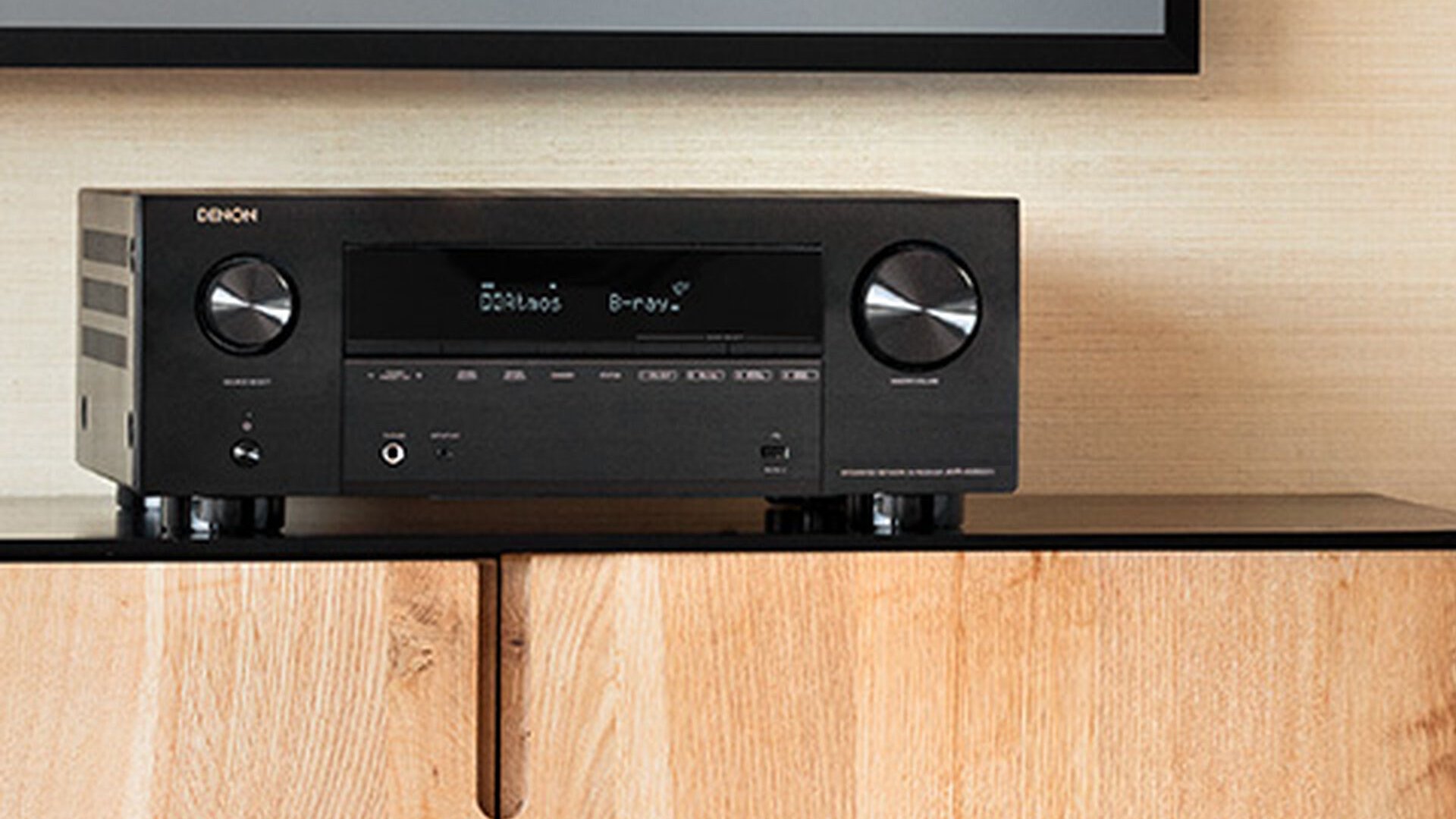How to set up a Dolby Atmos home theater system
Time to upgrade your home theater experience

So you’re thinking of upgrading from a soundbar to a full home theater audio system. But, you’ve heard all these terms like ‘5.1 surround sound’, ‘Dolby Atmos’, ‘A/V receiver’, subwoofer, etc and haven’t got a clue where to start. Well, have no fear because we’re here to help!
We’ll explain the various surround systems that you can buy, what options you have in terms of speakers and subwoofers and even what you need to consider when buying a Dolby Atmos home theater system (because there are a fair few things to consider).
So first of all, why speakers over soundbars? The best soundbars are getting more comprehensive and improving in sound quality all the time, but in our opinion, nothing beats a good A/V receiver and wired speakers. This gives you a bold, well-balanced sound where every speaker has a designated job, whether that be the centre speaker managing the speech or the rear speakers managing the rear sound effects.
When buying a Dolby Atmos home theater system, we’ll break down what you need to consider. It can vary from the size of the speakers you’re considering all the way down to the cabling itself when you’re thinking about not only what sound you want, but also what physical requirements or constraints you may have within your room itself. So, let’s get you that home theater system!
Things to consider
1. Room Size
One of the first things to consider when buying a home theater audio system is the room size. This will affect the quantity and type of speakers. Living in Bath in the UK, one major inconvenience a lot of the apartments face is high ceilings. With these high ceilings, the sound from the home theater system has to work harder as it has more of an area to cover and as a result, the sound is weaker.
These poor acoustics add to the work the home theater audio system needs to do, but can be dealt with by adding furniture, creating an optimum speaker setup or if you have the ability, lowering or adding in a false ceiling! There is another way to get around these poor acoustics, which we’ll discuss later.
Another size dimension to consider is the overall length of the room itself. A long room would result in the need for larger speakers in order to get the optimum sound because, as with the high ceilings, these speakers will need to work harder to reach you. The opposite is also true with smaller rooms needing smaller speakers. If you have too many speakers or subs in a room, the sound from each driver within the speakers may blend into one, resulting in a more muddled sound.
Sign up for breaking news, reviews, opinion, top tech deals, and more.

2. Floorstanders vs standmount speakers
So, room size has been considered and now we move on to speaker choice; floorstanders or standmount speakers. If you have a large room, floorstanders would be your preference. Most floorstanders nowadays are either 3-way or even 4-way speakers, meaning they have the treble, mid range and bass all covered by a driver or tweeter in the case of the treble.
This is ideal for home cinema as movies have a lot of different effects going on at once within their sound mixes and the floorstanders, primarily used for the front two speakers which deal with the main effects in soundtracks, have more drivers to focus on the different aspects within the mix. With the bass being covered by one of the drivers, they are a better choice for you if you find yourself unable to use a subwoofer.
However, standmount speakers do also have their place. Standmount speakers are getting more sophisticated, with higher-end models providing sound that can compete with their floorstanding alternatives. They also mix well with a subwoofer as they primarily focus on the treble and mid-range when the subwoofer is present and can often result in a nicely balanced sound.
Standmount speakers often sit better in smaller rooms as we discussed earlier. They’re not going to overpower the room but, with the increased quality of a lot of standmount speakers, will still provide a good-quality, often room-filling sound. The other big advantage to standmount speakers is bang for your buck. The price you would pay for a respectable standmount speaker would be the same as a budget and often lesser quality floorstander, leaving room to buy a sub.
3. How many subwoofers?
Speaking of subwoofers, just how many subwoofers should you consider for your room? This depends on several factors again including the size of the room and the A/V receiver you have. Most A/V receivers will take one or two subs, which in a majority of rooms will more than suffice.
When it comes to placement of subwoofers, the best spot generally is within the corner of the room as the adjacent walls will reinforce the bass frequencies. And if you have more than one subwoofer, place them in opposite corners. With this setup, each subwoofer has less work to do during bass heavy moments in movies, and it will ultimately give you the best sound over the widest seating area by evenly distributing bass throughout the room.

4. Dolby Atmos configurations
When it comes to the most immersive sound, Dolby Atmos is definitely going to give you the best experience. Dolby Atmos adds height channels to a mix to help create a true surround effect, almost making a ‘dome’ of sound around you. For example, think of rain within a movie scene, say in the market in Blade Runner: 2049. Dolby Atmos will emphasize the rain from the rest of the sound effects to give the clearest and most immersive sound possible.
When it comes to Dolby Atmos within a surround sound setup, say 5.1.2, it is the ‘.2’ within this configuration and indicates these Atmos height channels. Depending on what A/V receiver, you can upgrade the amount of overall speakers within an Atmos configuration (which in itself can do 24.1.10 speakers!) but generally, most people will find they have between two and six speakers for height channels. But now the question is what type of speakers should you use for height channels?
5.Ceiling speakers vs Atmos speakers

When it comes to speakers for height channels, the main two options you can look at are in-ceiling speakers or Atmos speakers. Atmos speakers are often wedge shaped and can either be positioned on top of your front speakers or mounted, but for the best effect, you’ll want to place them on top of your front speakers. The sound from these Atmos speakers is directed towards the ceiling, which is then bounced down towards you and still creates the desired ‘dome’ effect of surround sound.
The alternative option is in-ceiling speakers. The first thing to consider with these is installation. They are a lot more complicated installation-wise than the Atmos speakers as you need to consider specific cabling, which we’ll talk about later, ceiling height, speaker dimensions, etc, so it can seem a lot more daunting. But for the most accurate Dolby Atmos sound, it’s hard to argue against ceiling speakers as they will provide the most direct route for the sound to take, travelling straight down towards you.
Equipment you’ll need
So you’ve considered all the key factors above, but what are the core pieces of equipment you’ll need to get that Dolby Atmos home theater up and running?
TV or a projector

First of all, you’ll need either a TV or projector (depending on how large a display you want). The best TVs will come with the connection you need to get Dolby Atmos – HDMI eARC. This port allows your TV to pass through Dolby Atmos from the content on streaming sites like Netflix or Disney Plus to your A/V receiver.
Alternatively, you can hook up one of the best streaming devices or a blu-ray player to your A/V receiver and a lot of the best 4K blu-ray players process Dolby Atmos as well and will certainly give you the best quality for your Dolby Atmos home theater.
Alternatively, you can look at getting a projector, which will give you a larger display. Nowadays, a lot of the best 4K projectors will rival TVs in terms of picture quality, but it’s worth noting that for the best picture, you’ll want to buy a projector screen.
A/V Receiver
The A/V receiver is arguably the most important piece of equipment within the home theater ecosystem. This is the main hub that does all the work when processing the Dolby Atmos sound, sending the effects to the correct speakers and even tweaking the picture to its best quality. When it comes to it, the best A/V receivers don’t need to cost you a fortune to get Dolby Atmos, with some A/V receivers that can process Atmos starting around $500 / £500 / $AU750, and these prices are dropping all the time.
The type of A/V receiver you will want to get will vary on just how many speakers you are going to have in your system. A/V receivers will do 5.1 channels as a minimum, but we need one that does at least 5.1.2 channels to get that Dolby Atmos we want. You’ll also want to think about the future; if you’re planning to buy more speakers, get an A/V receiver with more channels.
It’s also worth checking to make sure the A/V receiver supports pass-through of as many HDR formats, like Dolby Vision, as possible to make sure you get the best picture to go with your new home theater setup. You may also want to think about other connectivity options and capabilities like Wi-Fi streaming, as A/V receivers can now be your entire entertainment hub.

Cabling
Cabling can make a surprising difference to the quality of sound you will get from your home theater. Quite often, people assume that some cheap cable from the local hardware store will work for their speakers and although technically this is true, it’s a real shame to compromise the sound of a home theater system over the sake of (more often than not) a small amount of money.
Working at a major A/V retailer in the UK, it was so frustrating to watch people spend a lot of money, often thousands, on a home theater system and then try to save what was a relatively small amount of money within the budget on cabling. The cable transfers the sound from the A/V receiver to the speakers – it is important!
There are various factors to consider when purchasing cable. For example, if you are going to run your cable under floorboards or through ceilings, you will need to purchase Low Smoke Zero Halogen (LS0H) cable. This cable is designed with a protective shielding to make sure it doesn’t overheat within confined spaces.
Additional considerations
There are a couple of other things that you can take into consideration when setting up your Dolby Atmos home theater system, but it’s worth noting that the following are not strictly necessary to get you up-and-running.
The first is soundproofing. There are a variety of options when it comes to soundproofing, but more companies are starting to provide this soundproofing in more aesthetically appealing ways, be that wooden slat walls, acoustic foam panels etc. This soundproofing improves the acoustics within a room and also limits the noise that escapes, meaning the overall sound you experience is enhanced.
Next is lighting solutions. Dimmers are a great friend to home theater enthusiasts as they mean that you don’t have to choose between full light or complete darkness in your cinema room. Blinds will help eliminate any problems that may occur with natural daylight, but if you have a projector or TV that suffers from glare, you may want to take this a step further with blackout curtains. And for those of you who want to make your home cinema feel even more immersive, you can even look into display backlighting to go behind and around your TV or projector screen to give it that cinema feel.
Finally, for those of you who love integration, smart home solutions is another option. Ever wanted a cinema room that’s ready to go with the touch of a button? Well, there are plenty of companies out there who offer this. Using Wi-Fi, you can tap these smart home systems to control everything in the cinema room from one device. With the simple push of a button, the projector screen drops down, the lights dim and the projector comes on and it’s thanks to these smart home solutions. Just know - these systems are not cheap!
You might also like
- Home Theater - coverage of all things home theater
- Magnetar UDP800 review - a fantastic 4K blu-ray player
- High-end home theaters - next-level home theaters

James is the TV Hardware Staff Writer at TechRadar. Before joining the team, he worked at a major UK based AV retailer selling TV and audio equipment, where he was either telling customers the difference between OLED and QLED or being wowed by watching a PS5 run on the LG 65G2. When not writing about the latest TV tech, James can be found gaming, reading, watching rugby or coming up with another idea for a novel.